UX Reasearch - PTC
Rapid UX research for complex software interface

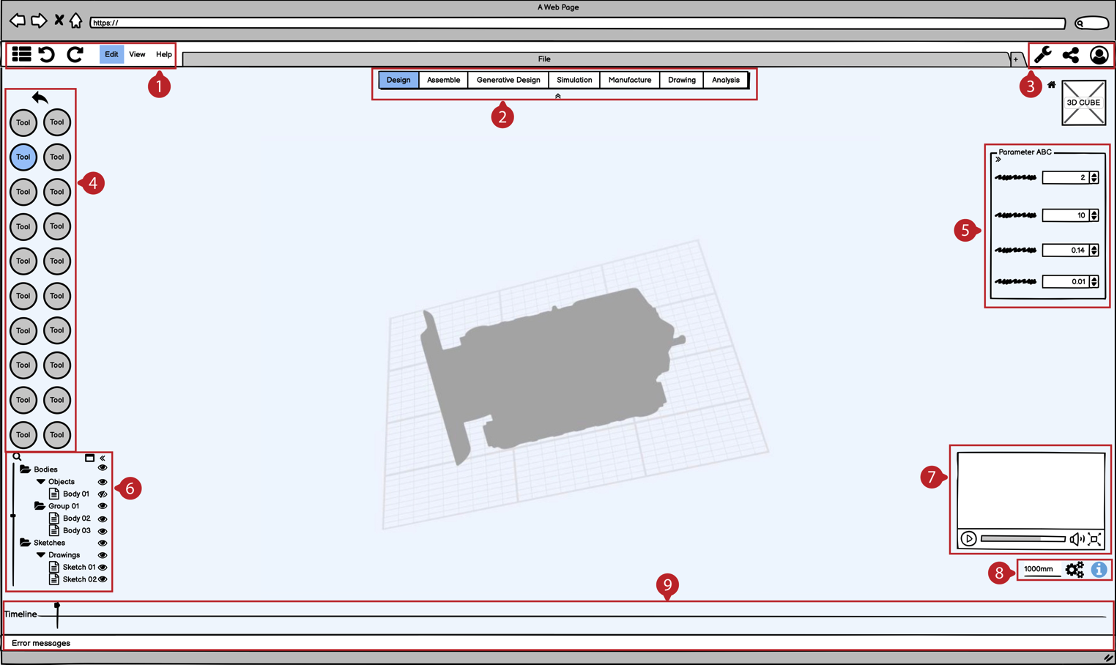
Project Overview
I developed a comprehensive and user-friendly interface for a cutting-edge 3D modeling software within an impressive timeframe of just one week. This project emphasized the transformation of complicated 3D object manipulation into a seamless, intuitive, and logic-driven experience specifically designed for engineers. The accelerated timeframe required careful consideration and a delicate balance between technical functionality and usability, ensuring that the final product met the high standards expected by industry professionals. The result was a robust and highly effective tool that significantly enhances the overall 3D modeling workflow, facilitating a more efficient and productive working environment for users.
Work Structure
To ensure effective oversight of the project's development, I implemented the Kanban agile methodology, which promoted a structured and transparent workflow. Throughout the process, I utilized design thinking principles, including conducting user interviews, performing market research, executing usability evaluations, and implementing A/B testing. This iterative approach facilitated continuous refinement of the solution, guided by authentic user feedback and insights gathered during each sprint.

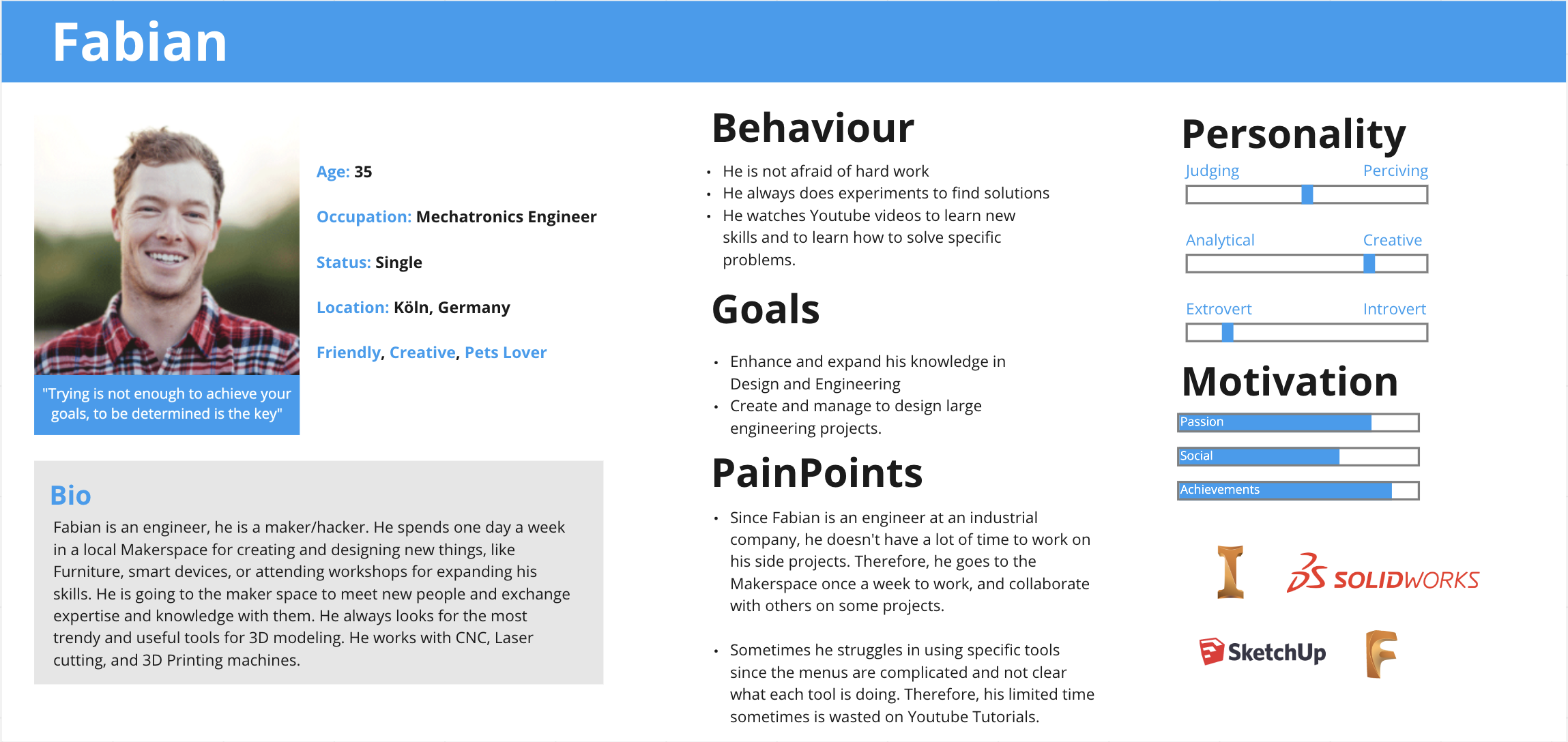
Research Methods
The research methods employed in the project involved a thorough exploration of user-centered design principles.
User Interviews
Due to time constraints, I conducted five semi-structured user interviews for qualitative insights. I used an open-ended question guide to encourage in-depth discussions. Given pandemic restrictions, the interviews were held via video calls, and participants consented to recording for analysis.
Persona Development
I created a persona based on data from the interviews to represent the primary user group. This persona highlights key insights about user needs, goals, and pain points. It focuses on individuals looking to start new projects while improving their skills. Major challenges include limited access to CAD software outside professional settings and a lack of collaboration between engineers and hobbyists.
Empathy Map
High-fidelity prototypes transformed complex 3D modeling interactions into intuitive visual narratives. Each iteration refined the interface, bridging the gap between technical complexity and user-friendly design.
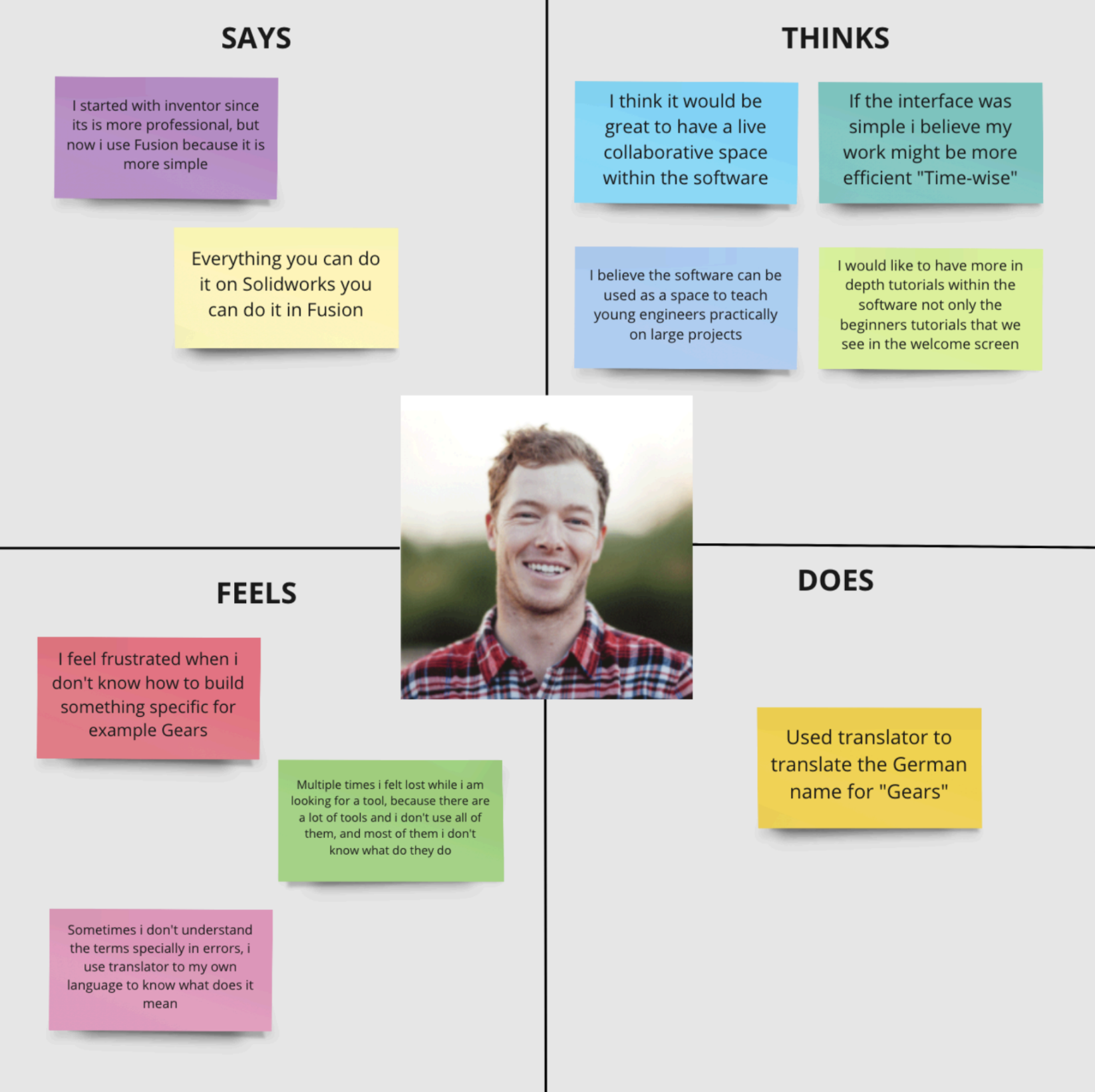
Desk Research
To complement primary research, I conducted desk research on common usability challenges in CAD software. According to a study by Lee et al., the most frequent issues with CAD user interfaces relate to:
1. Dialog boxes
2. Drawings and reports
3. Help function
4. Modeling
5. Domain terminology
6. General system terminology
7. View and navigation
8. Menu bar
9. Toolbar
10. Other usability aspects.
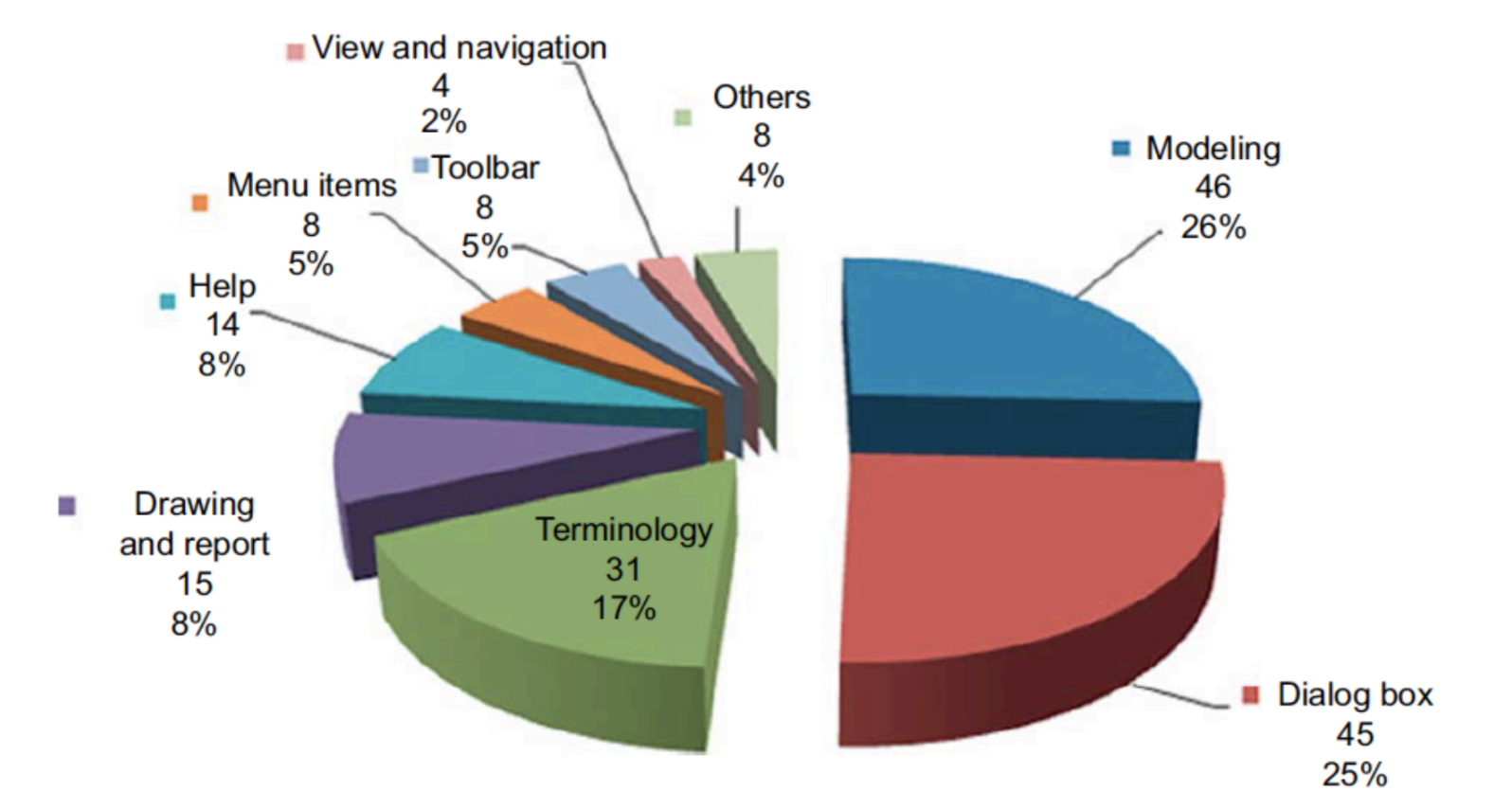
Wireframes
Understanding these challenges provided valuable context for identifying user pain points and opportunities for innovation in the design solution.
Here i made a low fidelity prototype in respect to all the principles.
I started with the on-boarding to the interaction with the files inside the platform, i didn't go into details of interaction since the challenge was only for a week and for giving a wireframe for the software.

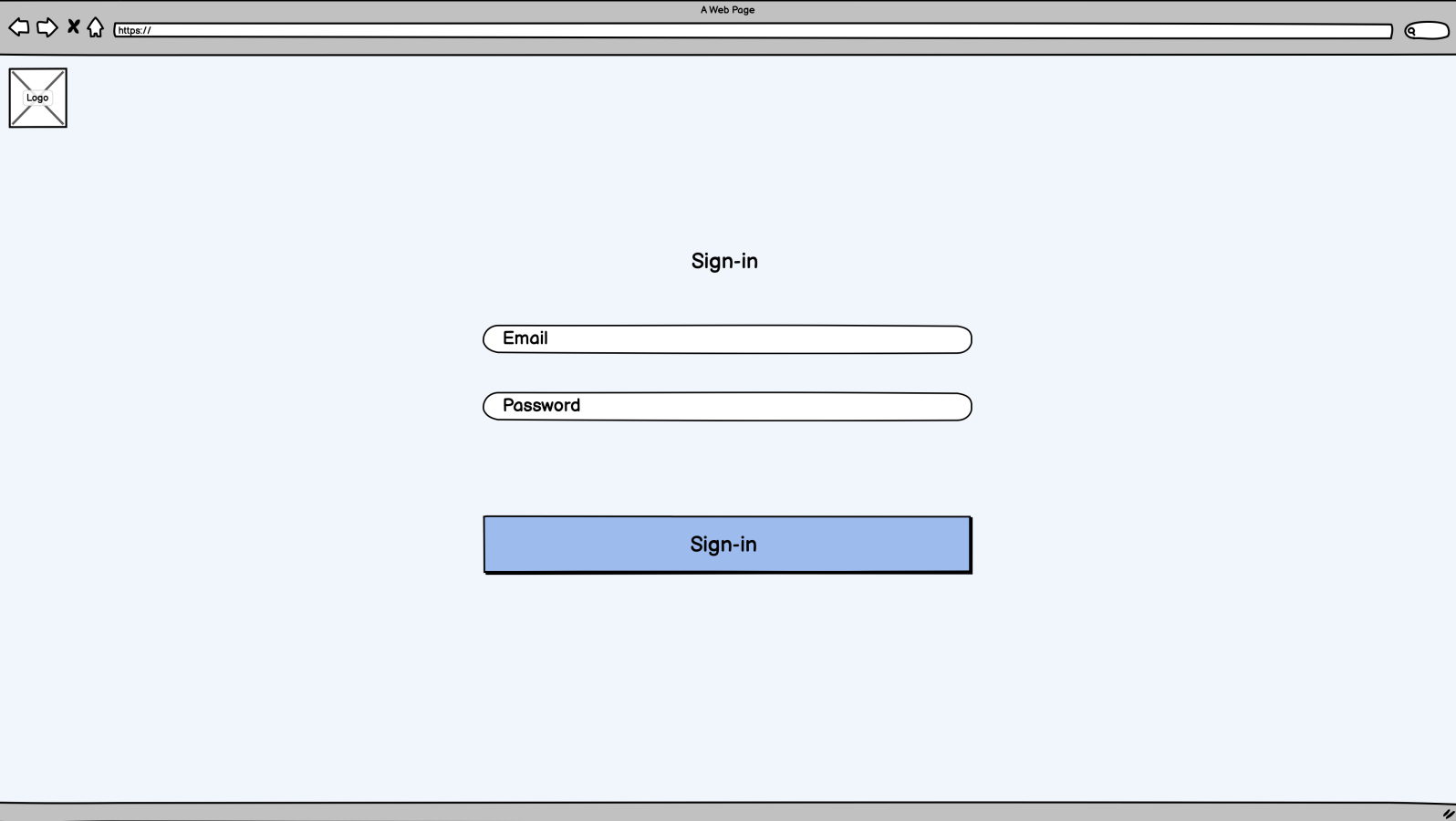






Evaluation
I wanted to use Nielsen Norman heuristic evaluation, but according to Lee et al., Nielsen and Molich’s 10 general heuristic evaluation rules are good to evaluate systems or design prototypes of basic desktop or web applications, but they are not extended to cover the UI of complex 3D systems.
Therefore, I evaluated the design by the design principles that were proposed by Lee et al. study.

